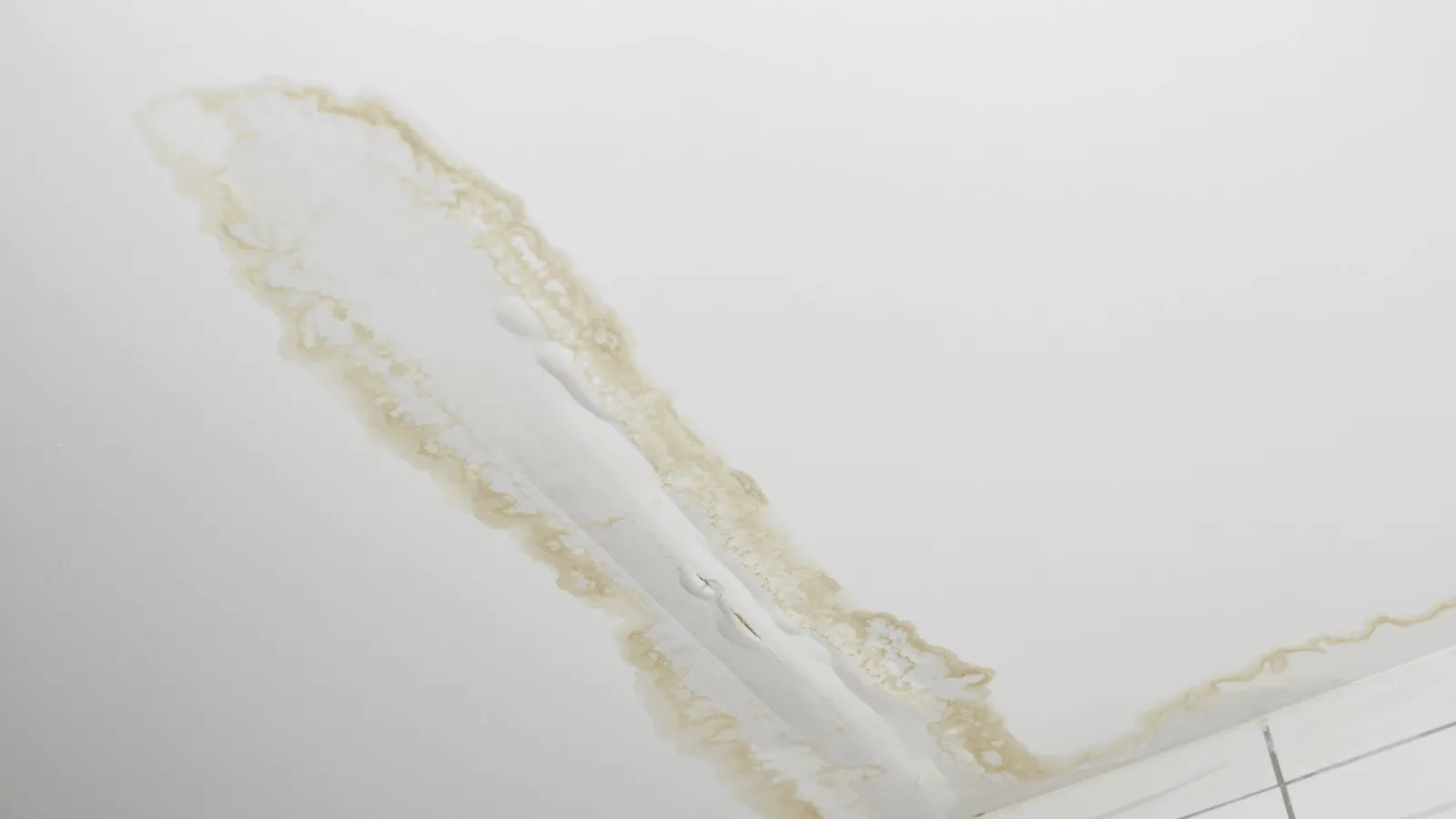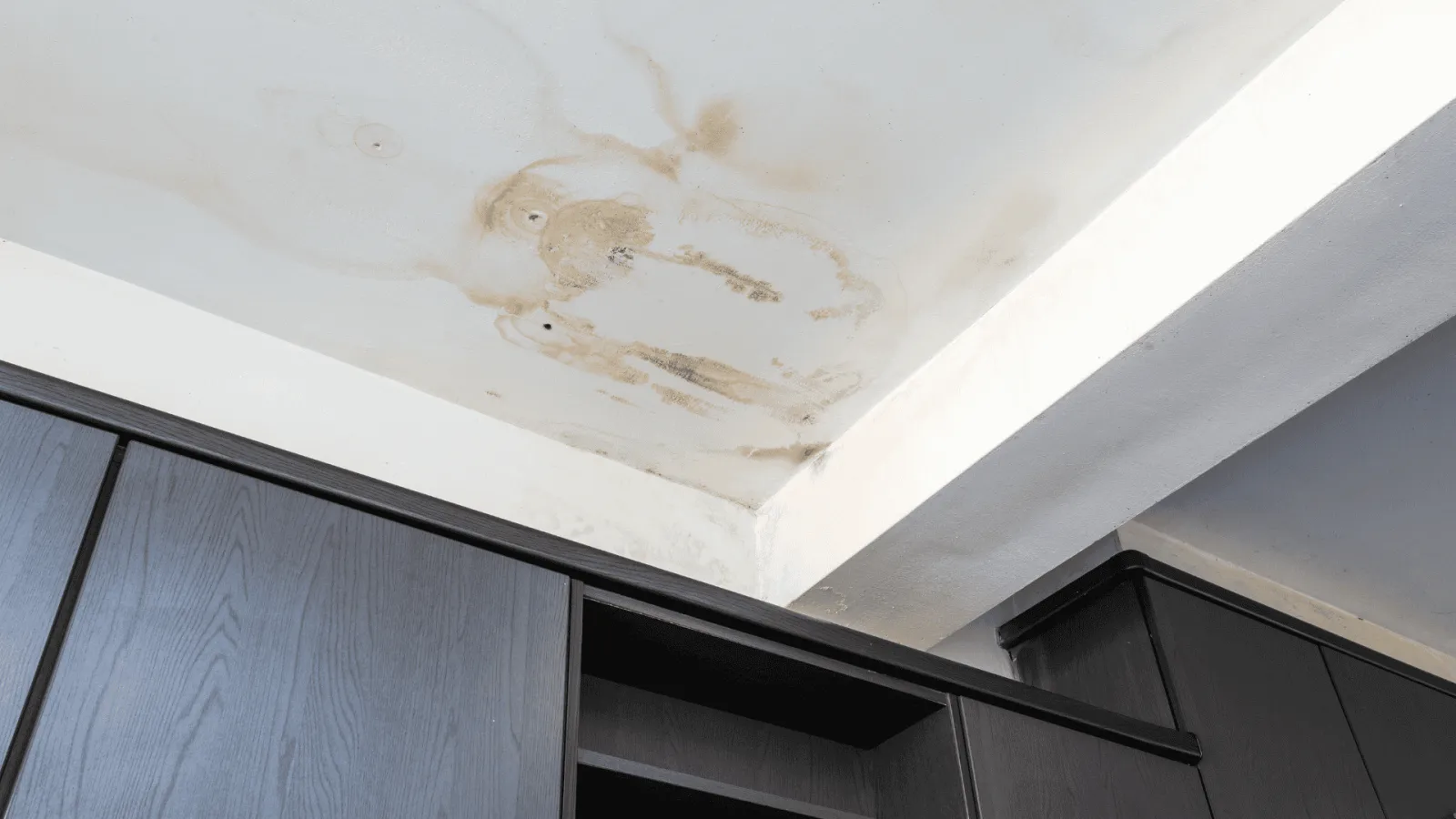Water stains on walls are discolorations caused by excess moisture seeping through or collecting on your wall surfaces and often signal deeper problems like insulation failure, hidden leaks or persistent condensation. When insulation is wet, compressed or missing, it cannot block humid air from reaching cold framing or sheathing, leading to wet looking spots on walls or moisture condensation stains on ceiling. Ignoring these stains can allow mold to grow, weaken structural elements and drive up your energy bills as your HVAC system works harder to compensate.
Insulation does more than keep your home warm in winter and cool in summer it also acts as a moisture barrier. When that barrier breaks down, trapped water rots wood, weakens plaster, promotes mold growth and can even pests. Wet insulation loses its R value, leaving your home drafty in winter and sweltering in summer. Spotting stains early and understanding their origin helps you protect your home's structure, protect your family's health and prevent high energy bills.
This blog will cover the main causes of wall and ceiling water stains, highlight insulation failure, share real scenarios, offer diagnostic examples and outline next steps from an attic check to contacting USA Insulation.
Why are there water stains on my walls?
Water stains on walls and ceilings often point to moisture problems that started unseen. In many cases, failing or missing insulation allows warm, humid air to meet cold surfaces inside your walls or attic. That temperature difference turns vapor into liquid, leaving wet looking spots on walls or moisture condensation stains on ceiling. If your insulation is wet or packed down, it can't stop humid air from reaching those cold wood beams and studs, where the moisture will then condense. As water builds up, it darkens drywall and wood, creating brown spots on wall or pale rings on drywall that eventually turn rusty or tea colored.
Insulation failure can occur in many different ways:
- Loose fill insulation can settle over time, leaving gaps at the top of walls or in the attic floor
- Batt insulation can sag away from exterior walls, creating cold bridges where moisture condenses
- In older homes, insulation may simply be missing in hard to reach corners
- You might see a brown stain on ceiling but no leak after heavy rain when your attic vents warm air into uninsulated spaces and pushes water vapor onto cold roof sheathing below
Condensation isn't limited to attic spaces. In a poorly insulated bathroom you could notice moisture condensation stains on ceiling above the shower. Steam piles up, hits a cold ceiling and drips back down. Kitchens often show water stains on ceiling near the stove or sink for the same reason. Even in living rooms high indoor humidity from a humidifier or many houseplants can lead to damp patches on exterior walls during winter. Over time this constant wet dry cycle leaves behind moisture condensation stains on ceiling joists and wall lines.
Hidden leaks can look like insulation failure. A small hole in a plumbing joint, damaged flashing around a chimney or vent pipe or a worn roof vent gasket can let water drip into your attic or inside your walls. Because these leaks only happen on and off, you might wake up to a brown stain on your ceiling even though nothing is leaking outside. The water soaks into insulation, spreads out over a wider area, then springs onto the drywall below. That is why brown spots on wall or ceiling are not always directly under a dripping pipe; moisture can travel before it shows up.

Left unaddressed these moisture issues invite mold to grow inside your walls. Mold spores thrive on damp insulation and wood, spreading invisibly until you smell a musty odor or see fuzzy growth along your baseboards. Besides damaging your home's structure, mold puts your family's health at risk—triggering allergies, asthma attacks and respiratory irritation. Water stains are your first warning that mold might be settling in behind the scenes.
When insulation issues are the usual suspect
If you have ruled out plumbing leaks and roof damage, look at your attic insulation. Step into the attic on a cool day and check whether insulation evenly covers the floor joists or wall tops. If it is clumped, compressed or missing around edges that is where moisture is getting in. Walls need a consistent insulation barrier from top to bottom and front to back. Even a few inches of missing batt or loose fill can allow condensation to form at the cold surface behind your drywall.
To help you pinpoint the issue in your own home, consider these common real life scenarios
• Brown stain on ceiling but no leak after rain
• Water stains on ceiling above shower
• Moisture condensation stains on ceiling near kitchen
• Brown spots on wall in a corner room
• Wet looking spots on walls after humidifier use
• Discoloration behind furniture against an outside wall
When water stains point to insulation problems
If you are seeing water stains and you have ruled out obvious leaks, insulation failure is often the culprit. Proper insulation acts as both a thermal barrier and a moisture buffer. When it is compromised by settling, damage from pests or poor installation, warm, moist air reaches cold framing or sheathing and turns to water. That water then soaks into drywall and wood creating the stains you see on ceilings and walls. In short, where insulation stops protecting, moisture finds a way in.
Next steps are straightforward. First, inspect accessible insulation in your attic, basement ceiling or crawl space. Look for gaps, sagging batts or caked on dust that indicates moisture has been passing through. Second, consider adding a vapor barrier or upgrading to higher performance insulation that resists moisture like closed cell spray foam. Finally, for a precise diagnosis and professional installation, reach out to USA Insulation. Our trained technicians use thermal imaging and moisture meters to locate weak spots and restore your home's barrier against condensation and drafts.
Don't let water stains on walls turn into costly repairs. A quick call to USA Insulation can save you from mold remediation, structural wood damage and sky high energy bills. We will give you a no obligation inspection, explain exactly what is going on and show you cost effective options from blown in cellulose to spray foam to keep your home dry and comfortable year round.
Whether you have noticed a brown stain on ceiling but no leak, wet looking spots on walls or simple moisture condensation stains on ceiling, we have your back. Reach out today and let USA Insulation help you stop water stains at the source.



